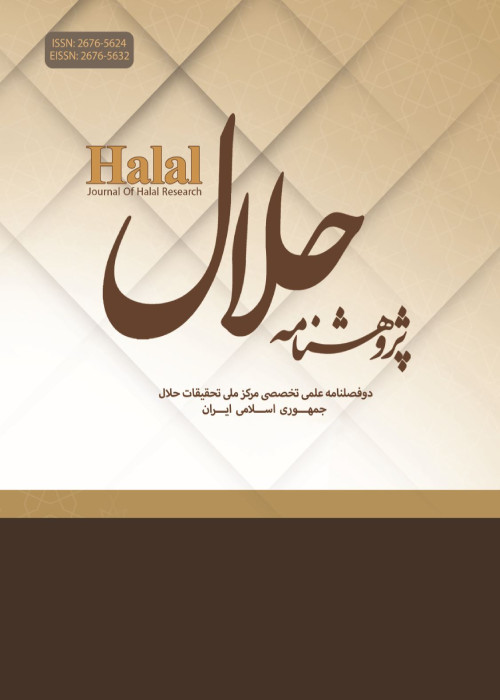Comparing the concentration of some hazardous materials in Halal and Haram seafood
Author(s):
Article Type:
Research/Original Article (بدون رتبه معتبر)
Abstract:
Introduction
The aim of the current study was to assess the agreement of the religious halal norm with difference in histamine, urea, and methanol levels as well of selected aquatic animal species.Methods
Samples of Arius maculatus, Atule mate, Cynoglossus bilineatus, Planiliza macrolepis, Portunus pelagicus, Rhinoptera javanica, Saccostrea cuccullata, and Sphyraena putnamae were obtained from the Chabahar Bay. The concentrations of total protein, histamine, and urea were estimated in dorsal muscle of fish, claw muscle of Portunus pelagicus, and soft tissue of the Sccostrea cuccullata samples, using the ELIZA method. Colorimetric kits were used for methanol determination.Results
Comparison of the mean urea concentrations amongst examined species indicated significantly higher levels of urea in haram species (W= 167.5, p= 0.013). Mean histamine levels on the other hand, were not significantly different between halal and haram food (F= 2.61, p= 0.11). Yet, histamine content in R. javanica fried flesh was more elevated compared to halal food. Also Protein levels were considerably decreased in cooked R. javanica meat. Methanol concentration was lower than the detection limit in all samples.Conclusion
We speculated that the cooked food should be considered for assessing the agreement level between halal norm with food quality. Colorimetric kit was used to detect methanol in samples.Language:
Persian
Published:
Journal of Halal, Volume:5 Issue: 3, 2022
Pages:
50 to 59
https://magiran.com/p2599511


